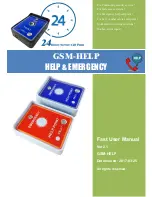
How IGMP Supports IP Multicast
341
How IGMP
Supports
IP Multicast
IGMP provides a way for routers and switches to learn where group
members exist on a network, and thus provides a critical function in the IP
multicast packet delivery process.
Electing the Querier
On each subnetwork or broadcast domain (VLAN), the communication
between routers, switches, and group members begins with one
IGMP-capable device being elected as the
querier
— that is, the device
that asks all hosts to respond with a report of the IP multicast groups that
they wish to join or to which they already belong. The querier is always
the device with the lowest IP address in the subnetwork. It can be a
router or a Layer 2 switch. The network traffic flows most efficiently if the
querier is positioned close to the source of the IP multicast traffic.
Query Messages
The querier normally sends messages called
IGMP Host Membership
Query
Messages
, or
queries
, every 125 seconds. All the hosts hear the
query because it is addressed to 224.0.0.1, the
all systems on this
subnetwork
Class D address. A query is not forwarded beyond the
subnetwork from which it originates.
Host Messages
Hosts use IGMP to build their own types of IP multicast messages, as
described in this section.
Response to Queries
Hosts respond to queries with
IGMP Host Membership Report
messages,
or simply
IGMP reports
. These reports do not travel beyond their origin
subnetworks, and hosts send them at random intervals to prevent the
querier from being overwhelmed.
A host sends a separate report for each group that it wants to join or to
which it currently belongs. Hosts do not send reports if they are not
group members.
If a router does not receive at least one host report for a particular group
after two queries, the router assumes that members no longer exist and it
prunes the interface for that source-group spanning tree.
Summary of Contents for CoreBuilder 3500
Page 44: ...44 CHAPTER 2 MANAGEMENT ACCESS ...
Page 58: ...58 CHAPTER 3 SYSTEM PARAMETERS ...
Page 86: ...86 CHAPTER 5 ETHERNET ...
Page 112: ...112 CHAPTER 6 FIBER DISTRIBUTED DATA INTERFACE FDDI ...
Page 208: ...208 CHAPTER 9 VIRTUAL LANS ...
Page 256: ...256 CHAPTER 10 PACKET FILTERING ...
Page 330: ...330 CHAPTER 12 VIRTUAL ROUTER REDUNDANCY PROTOCOL VRRP ...
Page 356: ...356 CHAPTER 13 IP MULTICAST ROUTING ...
Page 418: ...418 CHAPTER 14 OPEN SHORTEST PATH FIRST OSPF ...
Page 519: ...RSVP 519 Figure 94 Sample RSVP Configuration Source station End stations Routers ...
Page 566: ...566 CHAPTER 18 DEVICE MONITORING ...
Page 572: ...572 APPENDIX A TECHNICAL SUPPORT ...
Page 592: ...592 INDEX ...
















































